Artist and Architect Raukura Turei’s Co-housing Habitat
Interview by Shana Chandra
Images by Greta van der Star
Breaking bread with artist and architect Raukura Turei, her partner Moko and their two year old Hinauri at their dining room table in their co-housing apartment in Grey Lynn designed by Studio Nord is a display of community at its best. The stark sunlight of a Tāmaki Makaurau winter floods through the open plan living space, casting sunlit panels against the wooden interiors, as views of the Skytower and Maungawhau, guard us in the distance. A knock at the ranch slider door brings in two year old Celeste from next door, who ambles through and without a word heads straight for Hinauri’s toys. A few minutes later, her older brother follows suit, until their mother drops by to call them home for lunch. The walls are an act of community too, adorned not only with Raukura’s artworks and a photograph of indigenous tattooist Moko’s puhoro, but with friend’s artworks both traded and bought. Chatting to Raukura about her space and her art practice which interrogates both her own body, and the body of the land and ocean from which she comes from, we speak about how our lives turn us onto unexpected paths, but in doing so give us exactly what we need.

“We moved into Cohaus two months ago now. There are 19 different units of mixed sizes that wrap around a shared garden with a common house in the middle that we can use as a collective and for our own activities and parties. The beautiful big garden down below with shared vegetable gardens is just underway. We’ve got six share cars, three electric and three hybrid and a big bike store we call the stable. It’s quite funny because the modus of the community is really electric bike heavy, so I’ve already been seduced into going electric and I’ve just bought an electric bike. I’ve got a little seat, which I take Hinauri round in and I’m just in a process of selling my car. Construction on this site began about two years ago and I bought into it about three years ago, with friends of mine that live in the apartment two over from us. On both sides [of the apartment] I’ve got mates with little kids, so they all just run between this balcony which we all share. Having friends right next door who also speak te reo, and this seamless flow of community are aspects that you just can’t quantify in the price of a home.”

“We get all day sun [in here] and because it’s winter, it floods the living space. It’s incredible on the top floor because you get to see the sun rise over the city. It’s a view of the Grey Lynn area I’ve never really appreciated. Even growing up in the area, I had never appreciated this ridge line. You can see Maungawhau from the balcony, so it’s a beautiful sweep [of the skyline].”


“What’s been really important in this whare is surrounding ourselves with art and objects that reflect who we are and what we love. Most of the art works here that aren’t mine, are works of friends of ours, and we’ve been really lucky to be able to get pieces in the early stages of their mahi, that supports their practice. We’ve got two pieces from Victor Webster who is a friend of mine and Moko’s who is also a tattoo artist. We lived with Victor and his partner Kitty-Joe for a period of time in New York when I found out I was pregnant. I had incredibly heavy morning sickness with Hinauri during that time, and they took care of us at a particularly rough period.”
What’s been really important in this whare is surrounding ourselves with art and objects that reflect who we are and what we love.

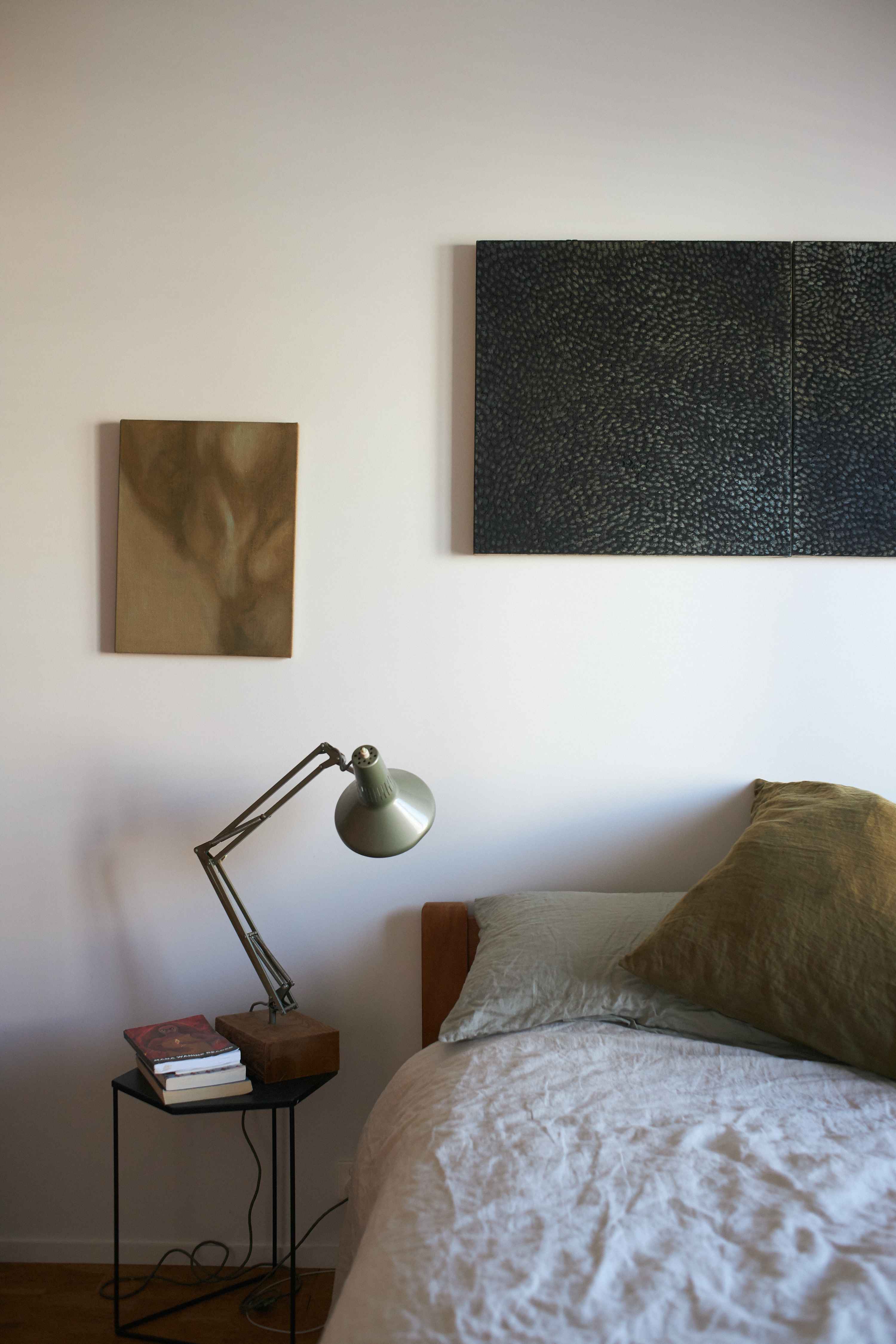
“There’s quite an evolution of my own art work in this space. There are ones that I made when I was in Vancouver when I returned to drawing about four and a half year ago. I had arrived in Vancouver, separated, after travelling through the States, Cayman Islands, Jamaica, Cuba and Mexico with my then partner. We had already organised Canadian Visas and all of our stuff had been shipped to Vancouver, because we’d planned to live there together. Instead we both arrived and started separate lives. It was the hardest, craziest time. I had no close connections in Vancouver and it was a long, wet winter. So the silver lining is that I actually found an architecture job quite quickly and I started painting on the kitchen table in the evenings. In my grief I just had to start making. I did this mark making process that had this rigid set of parameters that allowed me to make without thinking. So in the stormy depths of a Vancouver winter I was reunited with my love of mark making.”

“After coming home for a wedding, I decided I was done with Vancouver, and instead I changed my flight to Toronto where a girlfriend was living. There I created quite an incredible living condition for that time in my life, where I lived with one of my best friends, who had also recently separated from her long term partner. We shared her one bedroom flat where I painted in my days while she was at work, so it came to be a self-funded artist’s residency. I made the series ‘SELF’ at a time I was free to explore, especially to reconnect with my sensuality and sexuality as a single woman in a foreign country. It was important for me to reconnect with myself and rediscover who I was at 29. The period away from Aotearoa without the comfort of my family and friends allowed for a very real sense of healing, because I wasn’t avoiding stuff, I felt I was confronting my feels head-on and letting it come out in all its ugly colours. It was powerful.”
I made the series ‘SELF’ at a time I was free to explore, especially to reconnect with my sensuality and sexuality as a single woman in a foreign country.
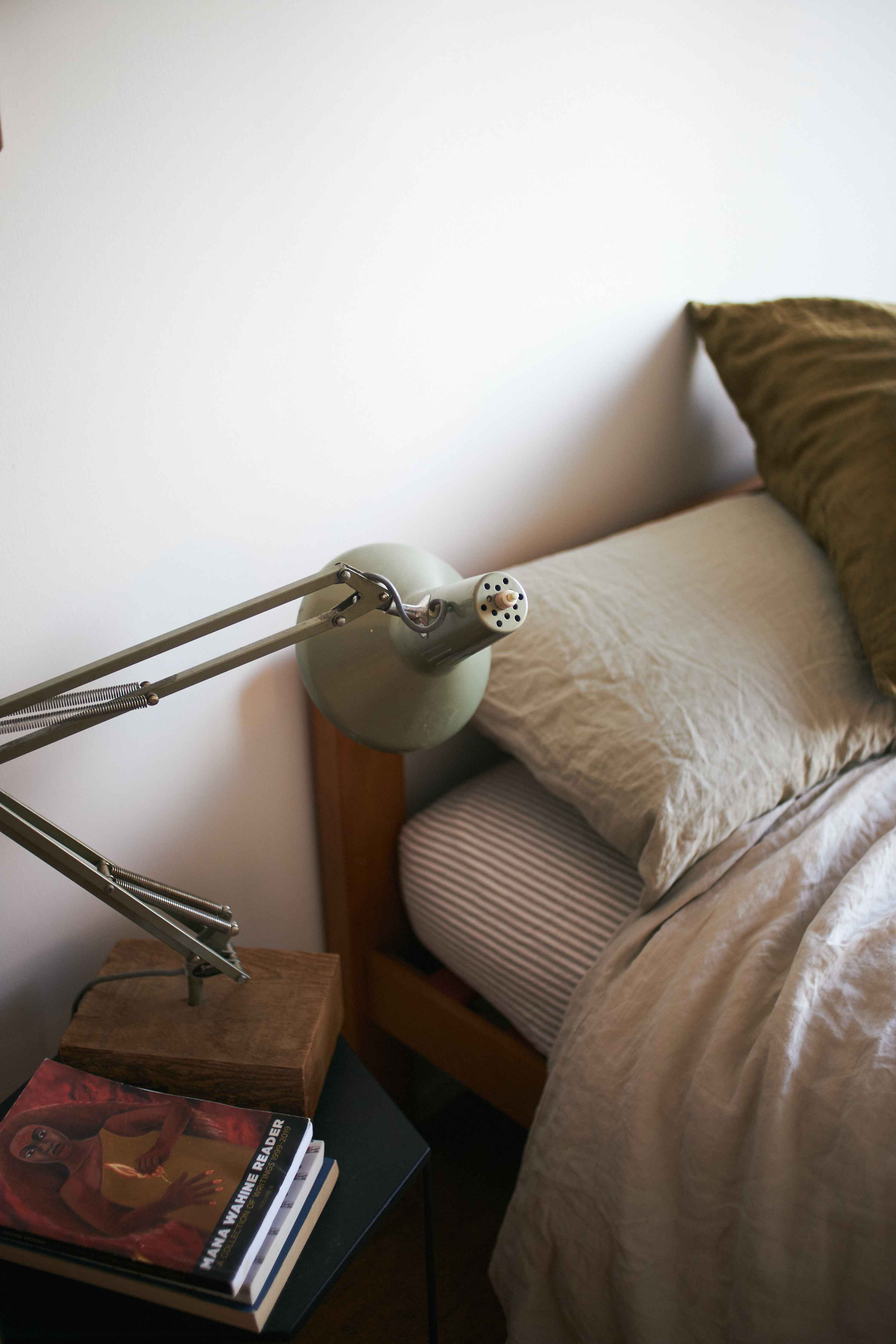
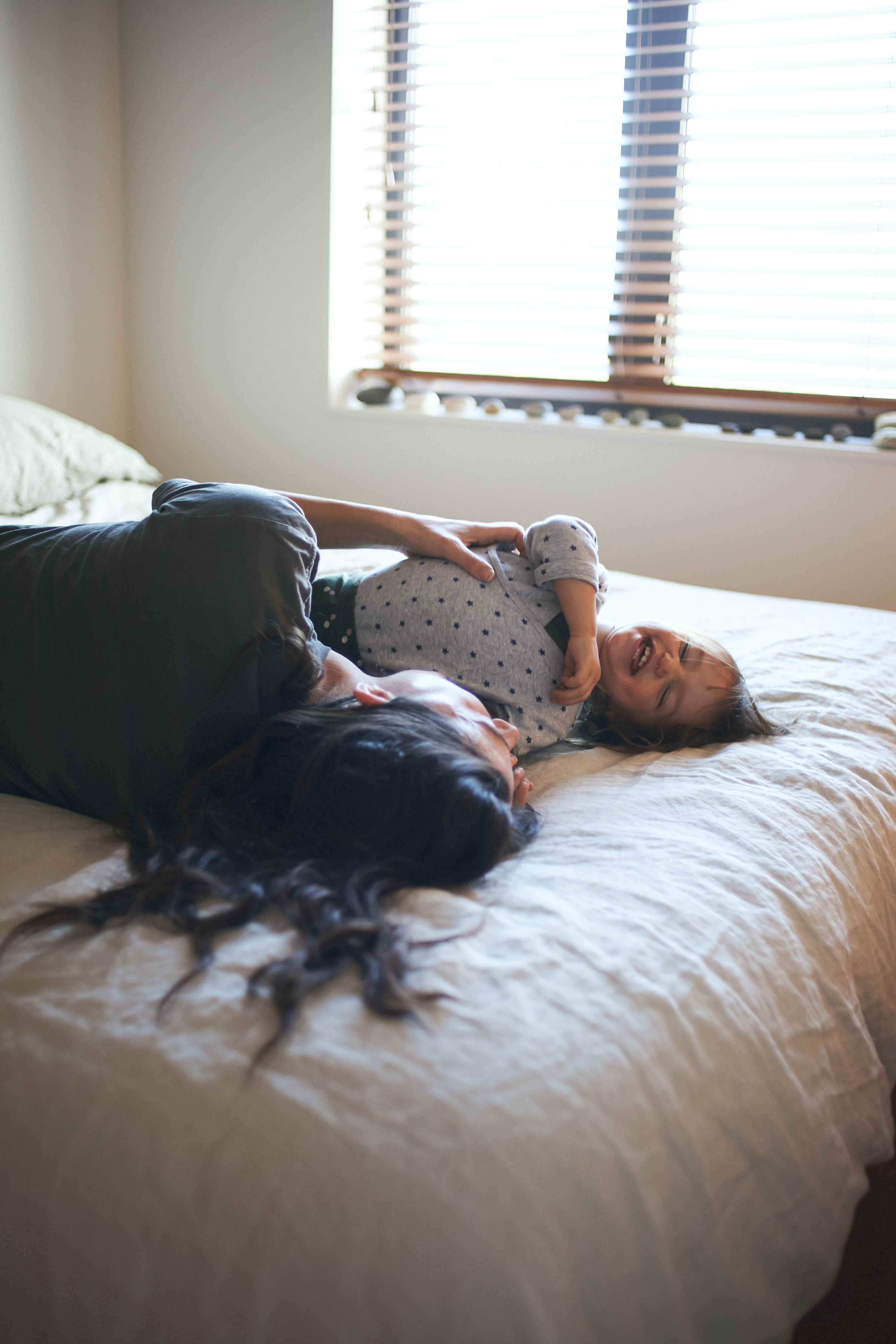
“When I came back from Toronto, I had a new series of art work, and it was in that series I turned to the body. It was all about this intense interrogation of self and situations especially around body sovereignty – whose is my body, and who am I going to share it with, and all those wonderfully big questions that you don’t confront when you’re in a relationship. At the time, I was also learning more about the hideous history for Indigenous women [in North America] that I knew little about, such as the Highway of Tears and the deaths, rapes and missing persons that are common place for Indigenous women in North America. I didn’t know how to do something meaningful other than to acknowledge the importance of the female body and its sovereignty through my artwork. Through this making process was a silent call to those women. As a Māori woman on their whenua, learning more about their stories, both the bleak history and more hopeful encounters helped me to feel connected to my own whenua across the Pacific. At the time I was reading a lot of Leanne Simpson who’s poetic retelling of the stories of Turtle Island where very empowering.”

“My Kuia’s story is very much informing my current body of work and the direction I want to take my art now. My earlier work [focussing on my own body] was the means to heal and just get making, and now the focus has shifted to what and why I want to be making. It’s been a fascinating transition and it’s something my mentor, Lynda Simmons in the architecture world had told me, that through your twenties a lot of your discovery of the world has you at the centre and you’re all about finding out who you are and what your purpose is in amongst it all. Then you get to your thirties and a bit older and have children, and suddenly it’s no longer inward look, rather an outward community focus, and you want your energy to benefit your wider networks and whānau. It’s was funny seeing that shift within myself and going, ‘Oh of course.’”

“It was in 2018 for a commision for Te Pātaka Toi – The Adam Art Gallery that I started using clay as a painting medium. It was a shift from the oil pastels and more traditional painting mediums I was using, to a experimentation with clays and binders to get the same textural approach at a much larger scale. More recently I was reminded of the blue clay called aumoana that’s found in Waimango, near Tāpapakanga which is historically Ngāi Tai whenua where my tīpuna lived. The whenua is now the Papakainga of the Royal whānau, and through my connection to Te Ahukaramu Charles Royal as a mentor whose research I used in my Masters Thesis for Architecture school, I have been able to return and collect this clay. This clay has a beautiful cyclical quality in my work as I first saw the clay rubbed on the the bodies of ‘Ngā Karohirohi – The light dancers’ in Orotokare, Charles Royal’s revival of the traditional Maori Performance Arts of the Whare Tapere – the premise of my thesis. Seeing the beautiful grey-blue clay on the body, I was inspired to use the aumoana in my own works, which evoke certain atua wāhine, our Māori performance deities. Hine-Ruhi is one of the particular deities I reference, who is the embodiment of the first light of dawn. The flickering light and heatwaves are personified in the male and female counterparts of dance. Hine-Ruhi is the female counterpart and Tāne-Rore is the male counterpart and I evoke them in my paintings by referencing those shimmering dawn colours and changing light. Calling in the power of our atua wāhine is a way I could shift from the self and connect to something bigger, to my tipuna whaea and their strength.”
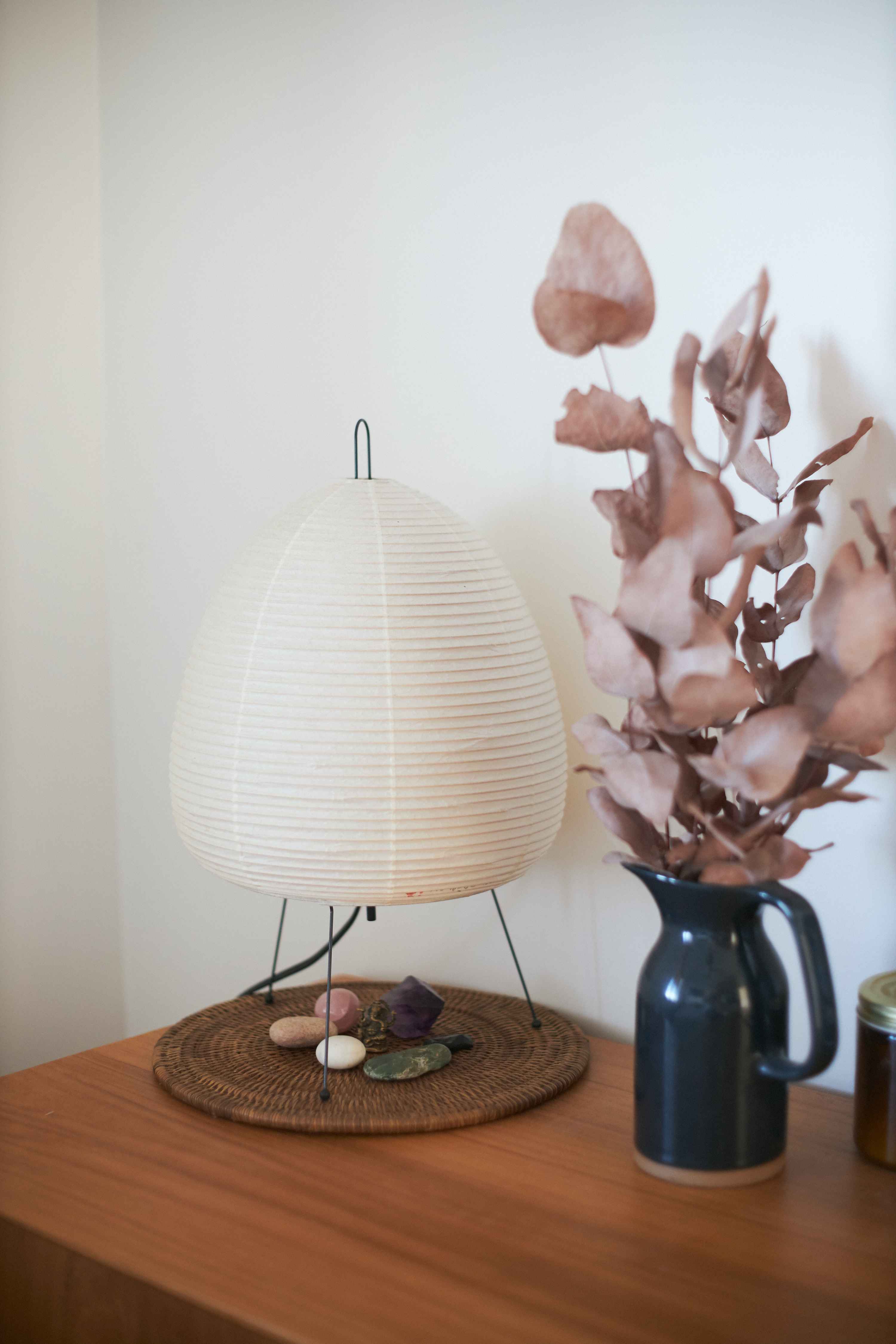

“The clay works are very much my East Coast connection to my tīpuna whenua of Ngāi Tai ki Tāmaki. I didn’t grow up with my Kuia, my Dad’s mother, and he didn’t either. He went into foster care as a baby as a ward of the State, so didn’t grow up with his birth brothers and sisters, but he started learning more about his mother in his twenties and thirties. It was just before she passed away that he almost found her. It’s heartbreaking. It was just before I was born. He got very close, and then she passed. She passed away prematurely in her sixties, on the rocks fishing at Te Henga [Bethells Beach]. So there are fragments of her story from my Aunty who did grow up with her, and my cousins who knew her as children. Then there are also the Social Welfare files on her where the State agency back then, went about writing case files that legitimised why they took Māori children off their mothers. So there’s nothing positive in the case files. But it’s something.”
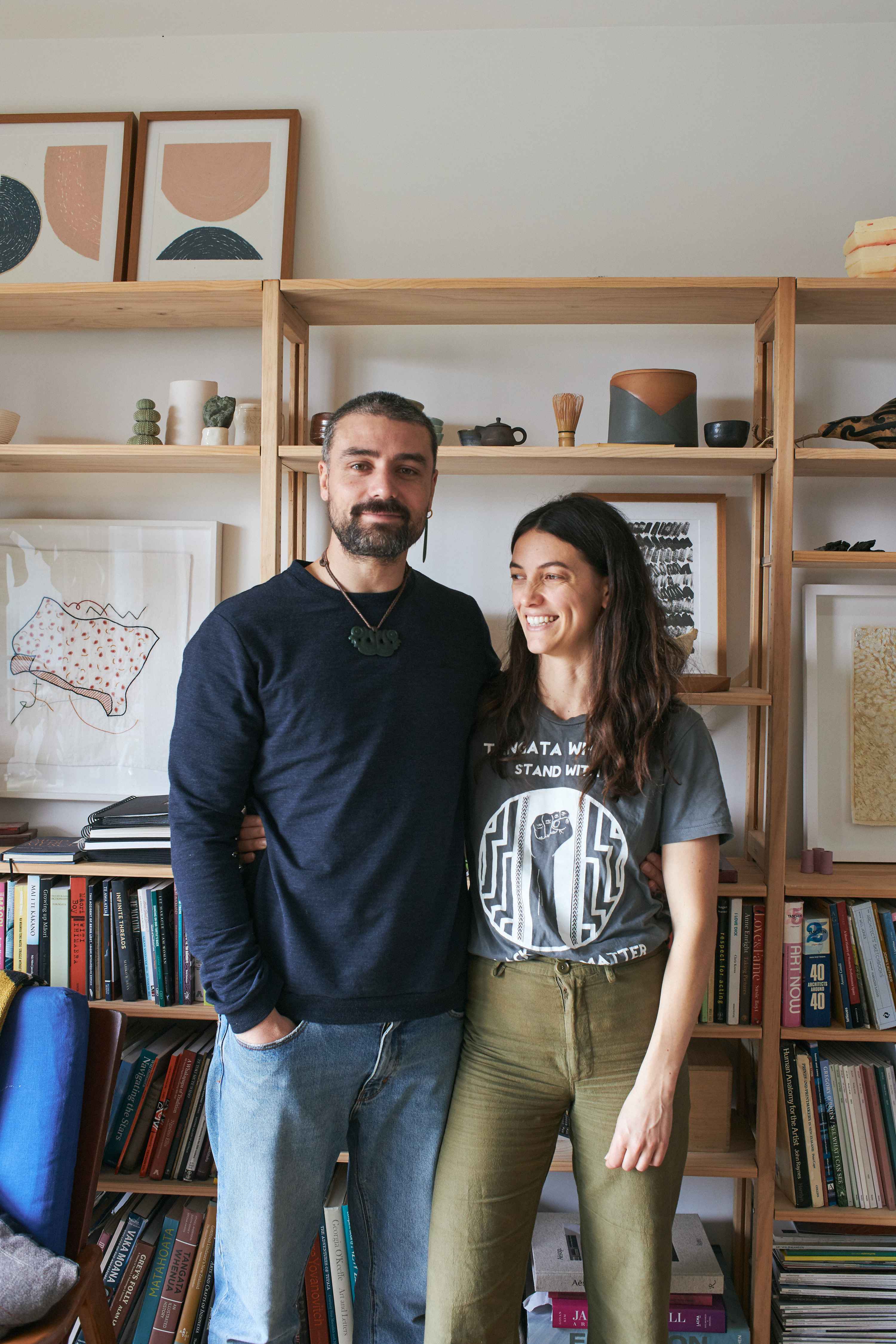

“These fragments of stories are one side, but for me a more personal connection is that I feel her presence when I am at the West Coast. When I swim in the water, I feel this incredible sense of release of the unknown grief that I carry that comes out in lots of weird different ways. But there’s also an incredible sense of connection as well. So, collecting the onepū from there, was a way of finding a material means to connect to my grandmother’s presence on the earth, and have something enduring that is a representation of her and her strength. They’re dark, deep, black works that have a world of what can appear as sorrow, but within that darkness is a world of potential as well.”

Raukura's bed is dressed in an IN BED 100% linen flat sheet and duvet in dove grey, a fitted sheet in grey & white stripe and pillowslips in stone.
You can see more of Raukura’s works here.
Her work is currently exhibited at CoCA, Centre of Contemporary Art Toi Moroki in Christchurch and will be shown at Objectspace in Auckland in December.